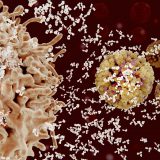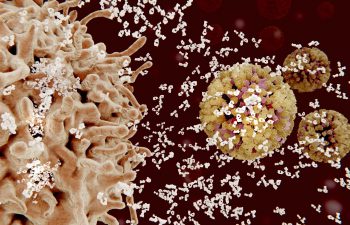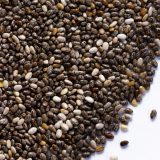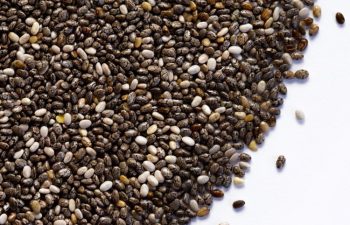Globally, there are approximately 2.1 billion adults who currently are overweight or have obesity. It is forecast that this will substantially rise to around 3.2 billion by 2050 – accounting for almost 60% of the adult population 1. This highlights that traditional approaches to curbing the prevalence of overweight and obesity have had limited success. … Read more »
White Papers
Our White Papers category features in-depth, science-dense articles backed by rigorous research and peer-reviewed studies. Whitepapers provide comprehensive analyses on key topics in health, nutrition, and food science, offering detailed insights into emerging trends, nutritional innovations, and public health concerns.
A healthy and diverse ecosystem is vital to providing life’s essential needs. The food we eat, the water we drink, and the air we breathe are natural assets that we depend deeply on. We rely on nature for so much of what we do, yet we often take it for granted. Our reliance on nature, coupled… Read more »
Amla, also known as Phyllanthus emblica Linn (Euphorbiaceae family) or the Indian gooseberry is referred to as balakka, kimalaka, kemlaka, kemloko, or malaka in Indonesia. The plant has thirteen synonyms listed in the World Flora Online database. This plant has been revered for centuries in the traditional medicine systems of Southern Asia, such as Ayurveda,… Read more »
Cognitive health Cognitive health refers to the state of an individual’s cognitive abilities, including memory, attention, reasoning, language, and problem-solving skills. Maintaining cognitive health is essential for overall well-being and quality of life, as cognitive decline can affect daily functioning and lead to conditions such as dementia and Alzheimer’s disease 1. Stress The impact of… Read more »
Almost 100 years ago when childhood mortality due to infectious disease was high, Dr. Carl Naslund noticed a curious thing – Swedish children that had received a tuberculosis vaccine not only were protected from tuberculosis but were three times less likely to succumb to any disease compared to the children who weren’t vaccinated. Decades later,… Read more »
Do you know your pro-biotics, pre-biotics, botanicals and supplements, from your vitamins, macro-nutrients and micro-nutrients? All can help women manage their physical and emotional wellbeing, but what should you consider taking and when? “Nutrition plays a role in women’s health, both in managing different life stages and in promoting long-term health, but with so many options… Read more »
Salt intake is significantly higher than the daily recommendation in many countries. What is being done globally to reduce salt intake, and how effective have these strategies been?
The past decade brought a rise in sugar-related discussions amongst the food and beverage industry, public health officials and the general population. While demand for sugar and sweeteners has never been higher, the need for sugar reduction has also continued to grow. Sugar, in the form of the carbohydrate glucose, is the primary energy of… Read more »
The future of food production relies on significant advances in microbiology, bioprocessing, enzyme technology and artificial intelligence, in order to feed a growing population, set to reach almost 10 billion people by 2050, while also reducing the negative impacts of food production on the planet. Recent advances in synthetic biotechnological processes such as precision fermentation… Read more »
Enzymes are used in food processing as a natural way to improve nutrition and texture. Learn about their importance in plant-based foods, infant formula, and more.
We summarize the science of the varied roles of omega-3 fats in health, how much people consume, and the difference between fish and algal sources of polyunsaturated fatty acids.
As a greater variety of protein sources are used in foods and beverages, there are more questions coming up around protein quality from consumers, product developers, and regulatory bodies. Our experts discuss how protein quality is calculated, methods to improve it, and what it all means for product development.
Immunomodulators often come up in online searches about immunity’s link with food and nutrition, but what are they? In this article, Sonja Nodland, PhD provides examples of immunomodulators found in food and describes the science of how they work.
Global conditions like sodium reduction initiatives and disruptions in supply and pricing of lactic acid mean acetates are getting increased attention. Here, we describe their efficacy as a preservative to reduce food waste and sodium content in meat.
Choosing fibre sources can be difficult because different fibres have different health benefits as well as different functional properties in food. This article provides an overview of Acacia fibre, including its origin, high digestive tolerance, and examples of how it can help formulation of different foods and beverages.
Why are plant proteins harder to formulate with than dairy proteins, and how have they improved in recent years? Our protein experts weigh in on challenges and advancements in replacing dairy proteins with plant proteins.
Changes in our immune system may be responsible for many of the age-related changes we see in our bodies. Nutrition is one way that can support the immune system to guide us on our way to healthy ageing.
Plant-based diets are becoming increasingly popular, but not all sources of nutrients are the same. Animal-based foods like milk or meat are rich sources of certain essential nutrients that are easily absorbed by the human body. These same nutrients are present in many plants but can sometimes be less available to the human body to… Read more »
We all have our good days and bad days for mood. This is relevant now more than ever. The COVID-19 pandemic has caused many people all over the world to feel increasing levels of anxiety, uncertainty and isolation. People are adjusting to working from home, which makes it even more difficult to strike a work-life… Read more »
Nutrition needs for children and teenagers Growth and development relies on good nutrition Growing from a child into an adult involves much more than we can see with our own eyes. Kids are constantly growing taller and stronger, which we can see, but also developing their senses, cognitive capabilities, or their blood volume is expanding… Read more »
Umami is one the primary tastes, but unfortunately the way many people have learned about it is through the negative perception of monosodium glutamate (MSG), the prototypical stimulus of umami taste. The questions ‘what does MSG do to your body?’ and ‘why is MSG bad for your health’ top the list of MSG-related internet searches,… Read more »
Nutrition plays a critical role in healthy aging, especially for muscle and joint tissues. Keeping these tissues healthy can improve quality of life as we age by helping us maintain mobility and independence.
Perfiles Nutrimentales en la región Latinoamericana (En Español) Herramienta de oportunidad para la innovación y desarrollo de nuevos productos. Anali Lopez, MS; Estela Sanchez, BS; Isabel Martin, BS; & Lilian Charchalac, MS Resumen Con el objetivo de informar y facilitar la toma decisiones para una mejor elección de alimentos y productos en la población, desde… Read more »
Ageing is an inevitable process affecting an increasing proportion of the world’s population due to increasing life expectancy worldwide. Delaying and/or reducing the rate of muscle ageing has been identified as a key strategy to minimise frailty and maintain independence in the elderly, with the goal of maximising quality of life during the golden years.
An estimated 795 million people worldwide (roughly one in nine) are chronically undernourished, 161 million of which are children. Advances in community-based approaches using ready to use therapeutic foods (RUTFs) are helping address world hunger. RUTFs provide a great opportunity for innovation to improve delivery of vital food and nutrients to struggling populations.
As the lives of consumers become more hectic, the frequency of snacking is on the rise. Research shows that the type of snacks selected determines if snacks are a help or a hindrance to a healthy diet.
July 2016 will bring important changes in the regulation of nutritional or dietetic products in the European Union. Foods previously exempt from certain regulations by PARNUTs legislation will now have to comply with all regulation specific to general foods, such as nutrition and health claims, food fortification, and food supplements.
Food choices and eating habits have changed dramatically around the world over the past fifty years. Our diets have been influenced by a range of factors; technologies in our kitchen, modes of transport supplying our shops, media, government as well as trade and migration.
Both glucose availability and insulin concentrations in the blood determine the rate of glucose uptake and glycogen synthesis in skeletal muscles. After endurance or high-intensity exercise, athletes have used up their glycogen reserves.
Obesity is the most common nutritional disorder in the world; 65% of the world’s population live in countries where overweight and obesity are major contributors to mortality.
Breast milk is undoubtedly the best option for infants, but there are times when a mother’s milk is not available. In such cases, infant formula takes the lead and offers a nutrient-packed alternative.
Asia’s ageing population and wide socioeconomic disparities have created a wide range of health concerns for its people. Latest developments and trends suggest that nutritional science and healthy ageing can be promoted through diets.


































































